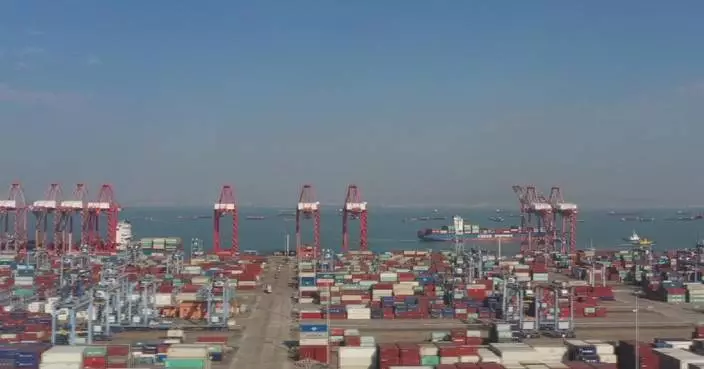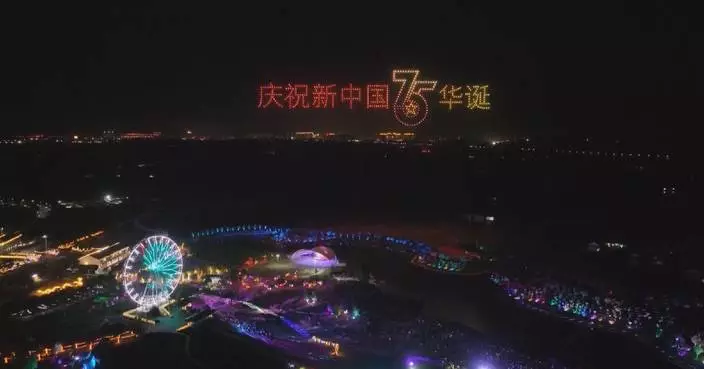An ancient tea trade route passing through north China city of Erenhot, bordering Mongolia and Russia, still thrives today in enhancing cultural and trade exchanges between China and its neighbors.
Erenhot, a city in Inner Mongolia Autonomous Region, is located along the northern section of an ancient tea trade route that connected China and central Europe. The route also served as a major channel for China to trade goods including fur products, clothes, salt, and porcelain with European countries.
Being a crucial business hub on the trade route for long in the past, Erenhot used to serve numerous camel caravans that stopped over in its historical Yilin Trading Post for replenishment before heading north to the dangerous deserts.
Today, the Yilin Trading Post Museum in Erenhot exhibits various relics that had testified its glory past, including a 200-year-old block of dried black tea from central China's Anhua City, Hunan Province. The tea block was packed in a water-resistant bag made with goat tripe.
"The tea must be properly packed for portable transportation and prevention from mold formation. While packaging still allows some air circulation, it remains waterproof. Another kind of tea packaging is the tea roll, where tea is filled into sheep hide rolls of different sizes and sealed tightly," said Ning Peijie, former director of the Erenhot Museum.
"The tea trade route started from the Wuyi Mountain in Fujian, and went through nine of today's provinces and regions including Jiangxi, Hunan, Hubei, Henan, Hebei and Inner Mongolia, where Erenhot, or Yilin at that time, is located. The goods would then be transported to Kyakhta and sold to Russian traders, who would transport them to Moscow, Saint Petersburg and other regions in Europe. The trade route stretched a total length of over 14,000 kilometers," said Li Yan, an explainer at the Erenhot National Geopark.
Over the recent decade, Erenhot has witnessed the joint efforts by China, Mongolia and Russia to file an application for the World Heritage List for the tea trade route.
In 2023, the mayors from the three countries signed a proposal for filing a World Heritage Site application and in 2019, China added the tea trade route to its Tentative List of World Cultural Heritage Sites, marking the applying effort was a national one.
The trade route is of great significance for promoting the construction of the China-Mongolia-Russia Economic Corridor, the trade and economic ties between nearby countries and the regional economic integration, according to a post of China's Ministry of Culture and Tourism.
The ministry added that the route also helps to push forward the communication and the mutual learning between different civilizations as well as the cultural protection, communication and development of the countries along the route.
"China's cultural export has remained active since then. There has been exchanges of not only goods but also personnel. So, to date, Erenhot's trade hub culture is still thriving and its influence to the city still persists," said Ning.
In the first eight months of this year, the amount of goods exported through the Erenhot Port surpassed three million tonnes, registering a year-on-year increase of more than 17 percent, and representing about 90 percent of the total export from Inner Mongolia Autonomous Region to Mongolia.
Currently, the trade route has been helping promote the tourism cooperation, cultural, educational and youth exchanges between China, Mongolia, and Russia.

Ancient tea route in Inner Mongolia continues to enhance China's ties with neighbors









